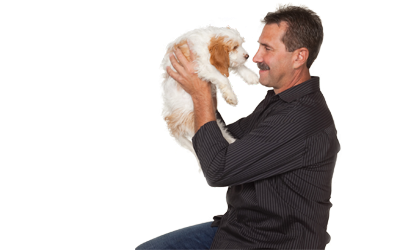Creating a Routine
A tired dog is a good dog!
- Provide clear rules and guidelines. There is never a need to physically reprimand your pet. Time outs, ending the game, and removing rewards are suitable punishment for a dog that is learning what the boundaries are. Make sure the boundary line doesn’t keep moving or your dog will become very confused.
 Go slowly. Remember that your new dog doesn’t know the rules or the people and things around him. Introduce new surroundings and routines gradually.
Go slowly. Remember that your new dog doesn’t know the rules or the people and things around him. Introduce new surroundings and routines gradually. - Feed on a regular schedule and teach your dog to sit and stay before giving him his dinner. Don’t disturb him while eating.
- Sleeping – Don’t let your new dog sleep on your bed (he can do this at a later date as long as he will get off cheerfully on your cue). Other great sleeping options are having a doggy bed placed next to your bed or in a crate in your bedroom.
- Catch your dog being good (lying on his bed, chewing his OWN toys, sitting for attention, etc.) and reward with affection, attention and treats when he is polite or does what you ask.
- Initially give your dog a confined amount of space in the home — free run of the entire house can be overwhelming! Restrict access until you establish some training and get to know your new pet better.
A tired dog is a good dog! Dogs need to use their brains as well as their muscles, so if you don’t have time to regularly play with and walk your dog, consider multiple treat dispensing puzzle toys (like a Kong®) for meals and alone time and/or a dog walker or doggie day care to provide some companionship during a long day.
